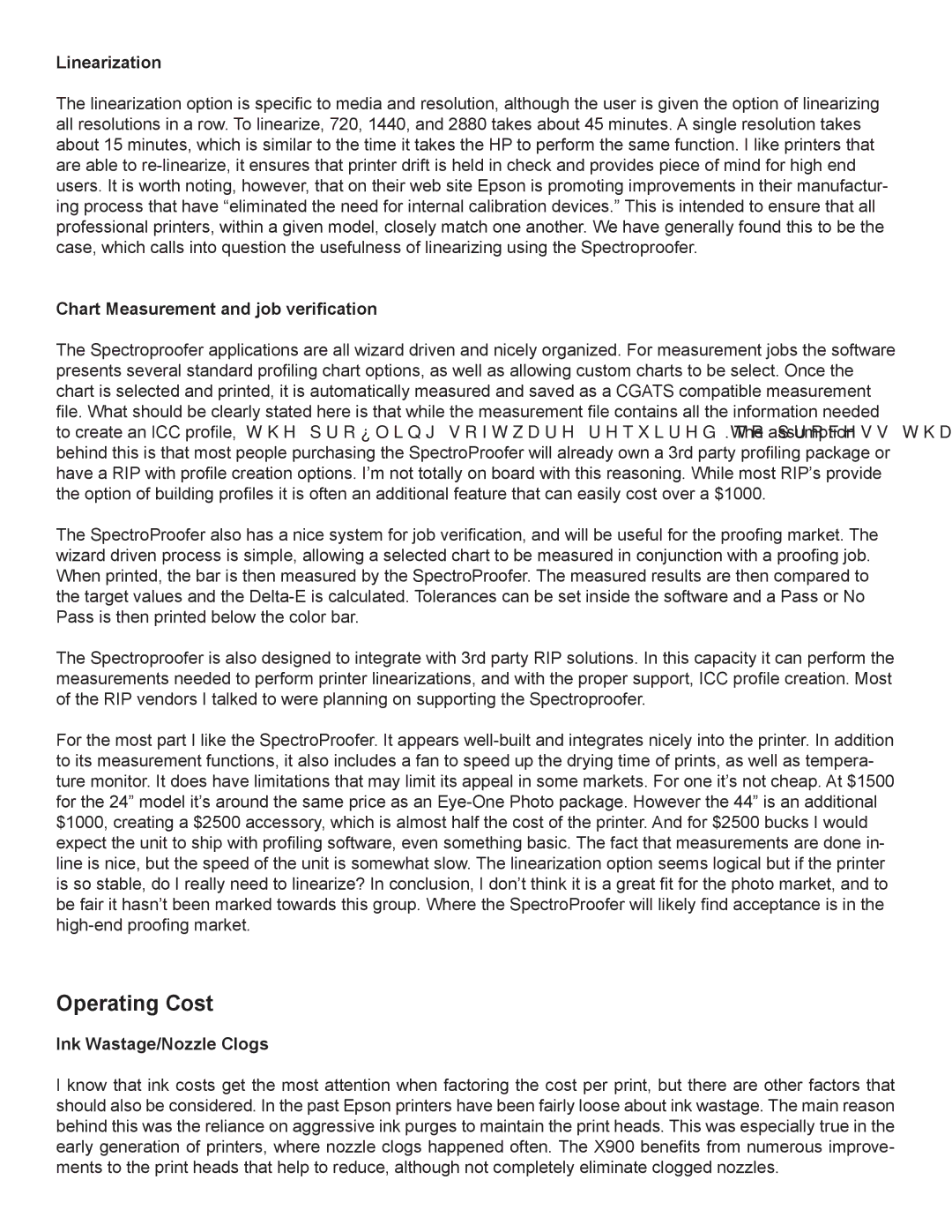Linearization
The linearization option is specific to media and resolution, although the user is given the option of linearizing all resolutions in a row. To linearize, 720, 1440, and 2880 takes about 45 minutes. A single resolution takes about 15 minutes, which is similar to the time it takes the HP to perform the same function. I like printers that are able to
Chart Measurement and job verification
The Spectroproofer applications are all wizard driven and nicely organized. For measurement jobs the software presents several standard profiling chart options, as well as allowing custom charts to be select. Once the chart is selected and printed, it is automatically measured and saved as a CGATS compatible measurement file. What should be clearly stated here is that while the measurement file contains all the information needed to create an ICC profile, the profiling software required to process that file is not included. The assumption behind this is that most people purchasing the SpectroProofer will already own a 3rd party profiling package or have a RIP with profile creation options. I’m not totally on board with this reasoning. While most RIP’s provide the option of building profiles it is often an additional feature that can easily cost over a $1000.
The SpectroProofer also has a nice system for job verification, and will be useful for the proofing market. The wizard driven process is simple, allowing a selected chart to be measured in conjunction with a proofing job. When printed, the bar is then measured by the SpectroProofer. The measured results are then compared to the target values and the
The Spectroproofer is also designed to integrate with 3rd party RIP solutions. In this capacity it can perform the measurements needed to perform printer linearizations, and with the proper support, ICC profile creation. Most of the RIP vendors I talked to were planning on supporting the Spectroproofer.
For the most part I like the SpectroProofer. It appears
Operating Cost
Ink Wastage/Nozzle Clogs
I know that ink costs get the most attention when factoring the cost per print, but there are other factors that should also be considered. In the past Epson printers have been fairly loose about ink wastage. The main reason behind this was the reliance on aggressive ink purges to maintain the print heads. This was especially true in the early generation of printers, where nozzle clogs happened often. The X900 benefits from numerous improve- ments to the print heads that help to reduce, although not completely eliminate clogged nozzles.
